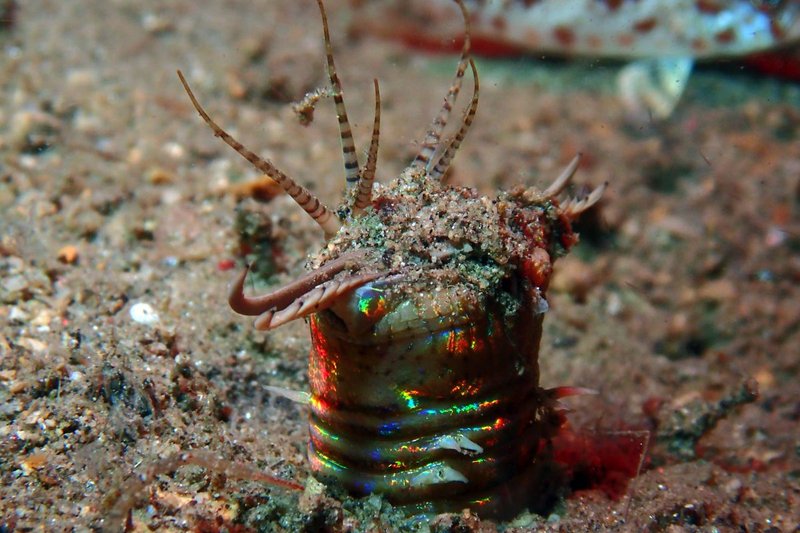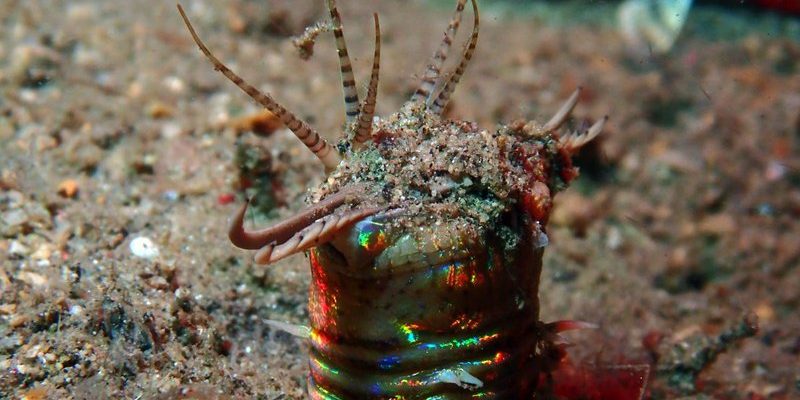
Now, think of *Bobbit worms* as the ninjas of the sea—a little mysterious and a lot stealthy. They hide in crevices or burrow into the substrate, waiting for the perfect moment to strike. If you’re keen on rock aquascaping, understanding how to safely coexist with these worms is essential. Let’s unravel the intricacies of *Bobbit worms* and tackle some safety tips for your aquascaping journey.
What Are Bobbit Worms?
*Bobbit worms*, scientifically known as *Eunice aphroditois*, are segmented marine worms that can grow impressively long—sometimes over 10 feet! They’re named after the infamous case of a woman who, in a bizarre twist of fate, used a knife in a very unconventional way. But instead of knives, these worms have amazing abilities: they can sense vibrations in the water and have sharp jaws to catch their prey. Think of them as natural traps, ready to snap up unsuspecting fish or crustaceans that venture too close.
These worms usually live in sandy or rocky environments, making a rock aquascape an appealing habitat for them. You might be wondering why you should be concerned about them. Their hunting method can sometimes harm your aquarium inhabitants, especially smaller fish. If you’re decorating your aquarium with rocks, it’s important to keep your eyes peeled for these little guys.
Identifying Bobbit Worms in Your Aquarium
Recognizing a *Bobbit worm* isn’t as simple as taking a quick glance. They often blend in seamlessly with their surroundings, making them tricky to spot. Here’s what to look out for:
- Sandy Burrows: If you see a small mound of sand with a hole, it might be a *Bobbit worm*’s home.
- Coloration: They usually have a greenish or reddish hue, but some can be a mix of colors.
- Segmented Body: Their long, segmented bodies can sometimes be visible when they extend out of their burrow.
Knowing how to identify *Bobbit worms* is essential. If you’re setting up a rock aquascape, consider moving any rocks that seem to house these worms to avoid surprises later on.
Creating a Safe Environment for Aquascaping
When rock aquascaping, you want to create a safe and inviting environment—not just for yourself but for all the aquatic life that calls it home. Here are some steps to ensure your aquarium is friendly and functional:
1. Plan Your Layout: Before you pile in the rocks, sketch out a basic layout. This way, you can avoid dense areas where creatures like *Bobbit worms* might thrive.
2. Choose the Right Rocks: Some rock types offer better stability without creating too many hiding spots for pests. Lava rock and coral rock can be good choices.
3. Test the Water Parameters: Ensure that the water conditions (like pH, salinity, and temperature) are suitable for your chosen inhabitants. A healthy environment makes it harder for unwanted species to thrive.
By taking these precautions, you’ll not only minimize potential run-ins with *Bobbit worms* but also create a thriving habitat for your aquatic plants and fish.
Handling Bobbit Worms: What to Do If You Encounter One
If you discover a *Bobbit worm* in your aquarium, it’s essential to handle the situation carefully. Here’s how to go about it:
1. Don’t Panic: They might look intimidating, but many aquarists live happily alongside them.
2. Catch or Remove: If the *Bobbit worm* is causing issues (like preying on your fish), you might need to remove it. Use a fish net or a piece of pipe to coax it out gently.
3. Relocate: If you choose to remove the worm, relocate it to a safe area where it can thrive without disrupting your aquascape.
Handling these creatures can be delicate, but remember—handling with care shows respect for their role in the ecosystem.
Prevention Tips for Bobbit Worm Encounters
While *Bobbit worms* can be fascinating, you might want to keep them to a minimum in your aquascape. Here are some prevention tips to consider:
- Regular Maintenance: Clean your aquarium and check for unwanted inhabitants regularly. A clean tank can prevent unwanted species from taking root.
- Quarantine New Additions: Before introducing new fish or corals, quarantine them to ensure they don’t introduce pests like *Bobbit worms*.
- Research Before Buying: If you’re purchasing live rock, ask about its history. Some sources may contain hidden *Bobbit worms*.
Taking these small steps can save you a lot of hassle down the line.
When to Seek Professional Help
Sometimes, despite your best efforts, *Bobbit worms* can pose a real challenge. If you feel overwhelmed or if they’re causing significant problems in your aquascape, reaching out for professional help can be a savvy move. Here’s when to consider it:
1. Overpopulation: If it feels like your aquarium is being overrun, a pro can assess the situation.
2. Infestation Concerns: If you suspect multiple *Bobbit worms* or similar pests, an expert can help identify and manage the issue effectively.
3. Biodiversity Management: If you’re looking to create a balanced aquarium ecosystem, professionals can provide insights tailored to your specific setup.
Trusting experts can take some weight off your shoulders. It’s all about creating a beautiful, safe environment for everyone involved.
Final Thoughts on Bobbit Worms and Rock Aquascaping
Navigating the world of *Bobbit worms* and rock aquascaping might seem daunting, but it can be incredibly rewarding. By understanding these unique creatures and how to coexist with them, you’re setting yourself up for success. Remember, aquascaping is all about creating a living artwork, and with a little care and attention, your underwater scene can flourish beautifully.
So whether you’re just starting or enhancing your existing setup, keep these safety tips in mind. With patience and knowledge, you can create a thriving aquatic haven that’s both stunning and safe. Happy aquascaping!

